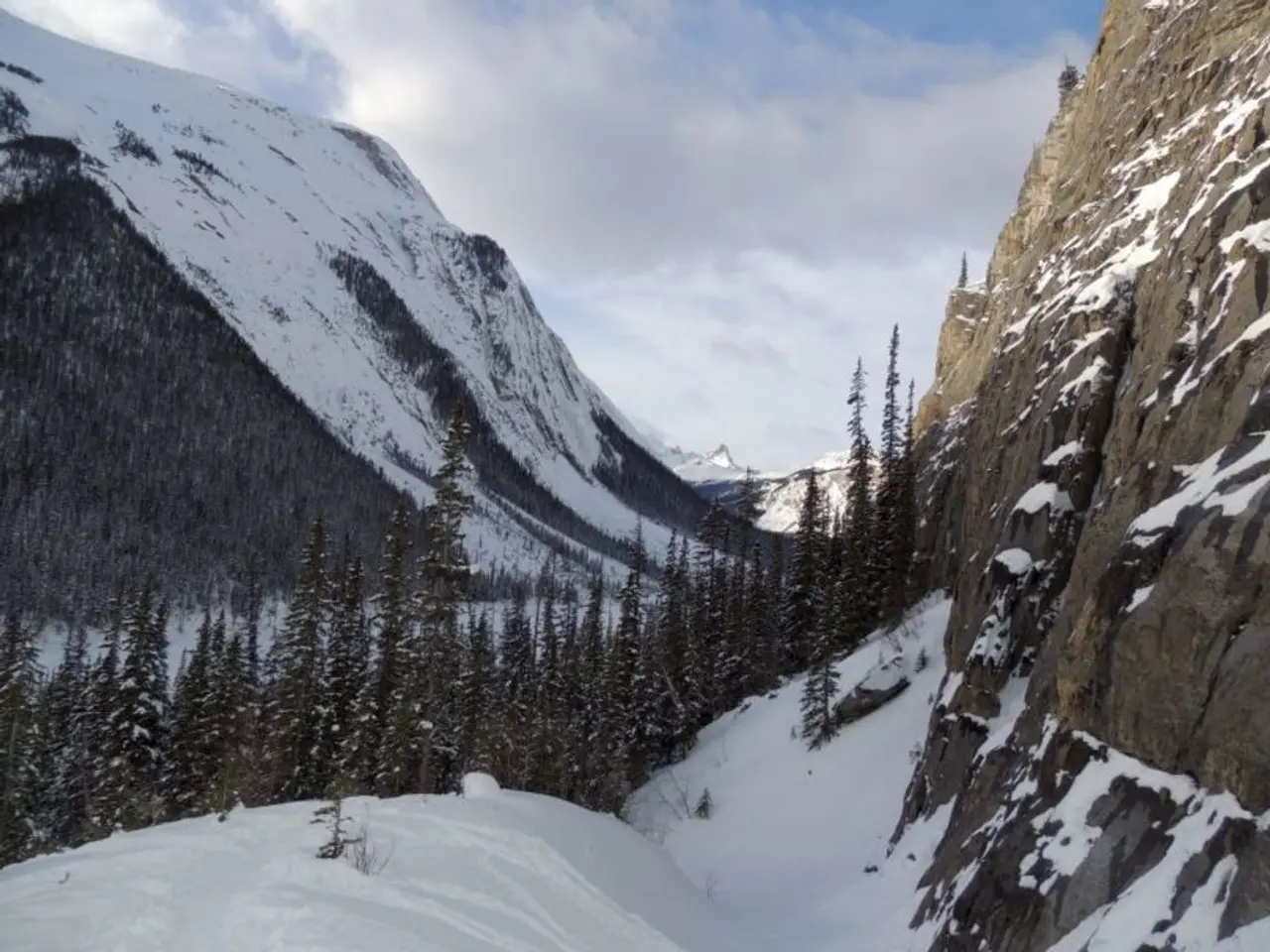Climate crisis highlighted: satellites underscore the alarming degree of glacial melting
Mountain glaciers, the world's silent sentinels, are melting at an alarming rate, triggering a cascade of consequences that affect ecosystems and climate worldwide.
1. **Rising Sea Levels and Disrupted Ocean Currents**
Over the past two decades, mountain glaciers have lost around 5% of their total volume, equivalent to an average of 273 billion tonnes of ice per year. This melting contributes significantly to sea level rise, with mountain glaciers contributing more to rising sea levels than Greenland and Antarctica combined since 2000. This has resulted in an 18mm rise in global sea levels between 2000 and 2023. Moreover, the melting disrupts ocean currents, impacting local climates and wildlife.
2. **Volcanic Activity and Water Pollution**
Glacial retreat can lead to increased volcanic activity by removing the weight of ice that suppresses volcanic eruptions. This can result in more frequent and explosive eruptions, releasing greenhouse gases and potentially contributing to a positive feedback loop of warming and melting. Additionally, the melting of glaciers exposes rock formations, leading to acid rock drainage, which contaminates waterways with heavy metals, threatening water supplies and agricultural productivity.
3. **Satellites: Our Eyes on the Glaciers**
Satellites have revolutionized glaciology, providing additional data with a global or regional view, even in remote and inaccessible areas. They enable the measurement of changes in ice thickness and volume, such as the altimeter-equipped CryoSat-2, the tracking of snow distribution and melting rates using the multispectral imager (MSI) on the Sentinel-2 satellite, and the creation of digital elevation models of a glacier’s surface through stereoscopic imaging.
4. **Preserving Glaciers: A Call to Action**
Heïdi Sevestre, a researcher working with the Arctic Monitoring and Assessment Programme, a working group of the Arctic Council, emphasizes that it's not too late to act to preserve glaciers. Closely monitoring glacier parameters is essential for detecting early warning signs, and satellites play a crucial role in this endeavour. They provide accurate data on glacier extent and mass changes, helping scientists understand the pace and extent of glacier melting and informing policymakers on how to preserve glaciers.
5. **The Role of Satellites in Mitigating the Effects of Glacier Melt**
Satellites are indispensable for monitoring and mitigating the effects of glacier melt. They support both scientific research and practical management strategies. For instance, satellite data, combined with ground sensors, can be used to develop early warning systems for potential natural disasters such as landslides and floods triggered by glacier melt. Furthermore, by analyzing satellite data, researchers can better model climate changes and the effects of glacier melt on global climate patterns.
The future of mountain glaciers is intertwined with our actions today. Copernicus missions currently under development, such as CRISTAL for the Arctic and ROSE-L, as well as the CO3D constellation, will continue to provide scientists with data and inform policymakers on how to preserve glaciers. It's crucial that we act now to preserve these vital resources, not just for our present, but for future generations as well.
[1] Source: European Space Agency (ESA) [2] Source: University of Colorado at Boulder [3] Source: National Snow and Ice Data Center (NSIDC) [4] Source: International Centre for Integrated Mountain Development (ICIMOD)
- The melting of mountain glaciers could potentially have far-reaching impacts beyond climate change, such as contributing to the onset and exacerbation of neurological disorders and other medical-conditions due to the disruption of ecosystems and the increase in airborne pollutants.
- Scientists and researchers in both environmental-science and health-and-wellness are increasingly exploring the potential benefits of CBD (cannabidiol) in the prevention and treatment of various neurological disorders and medical conditions. In this context, it's worth considering the potential role of CBD in mitigating the effects of glacier melt on human health, as the reduction in glaciers could lead to changes in air and water quality.
- With the increasing recognition of the importance of climate-change research and the role of mountain glaciers, there is a growing need for interdisciplinary collaborations between science, policy-makers, and the public. This collaboration could pave the way for innovative solutions and strategies to address the complex challenges posed by the melting of mountain glaciers and its cascading effects on the environment and human health.




